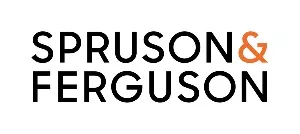- in United States
- within Privacy and Corporate/Commercial Law topic(s)
- with Senior Company Executives, HR and Finance and Tax Executives
- with readers working within the Banking & Credit, Healthcare and Technology industries
In an interconnected world, technological standards such as 5G, Wi-Fi, and Bluetooth play a crucial role in ensuring interoperability within global technology ecosystems. Technology companies that develop and protect these standards stand to gain substantial benefits, but there are also potential challenges. Taking a strategic view is crucial.
Whether it's smartphones utilising 5G or laptops connecting to Wi-Fi networks, adherence to established technical standards is essential for seamless operation.
Companies participating in the development of these standards often file Standard Essential Patents (SEPs), and in the Asia Pacific region, there has been significant growth in SEP activity over the last 10 years, with China emerging as a global leader in SEP filings.
In 2010, there were around 82,000 SEP registered patents and this has tripled to over 300,000 by 2021. For 5G alone, almost 100,000 patents had been declared essential by 2020.
In this article, we discuss what a SEP is and why engaging with SEPs is both an opportunity and a legal/strategic challenge, particularly for companies in the telecommunications and emerging technologies sectors.
Technology companies, particularly those operating in the greater Asia regions, could benefit greatly and should consider participating in established SEP organisations, and developing and protecting these technologies.
What is a Standard Essential Patent (SEP)?
A Standard Essential Patent (SEP) refers to a specific type of patent that pertains to technologies encompassed by technical standards like Wi-Fi, 4G, and 5G. While all patents protect inventions, SEPs are deemed essential for implementing particular standards. This means that a product compliant with the standard necessarily uses the patented technology. Like regular patents, SEPs are jurisdiction-specific; without the patented technology, developing a compliant product would be infeasible or commercially impractical.
SEPs are vital to standards established by organisations such as the European Telecommunications Standards Institute (ETSI) and the Institute of Electrical and Electronics Engineers (IEEE). Once technology becomes standardised, the essential patents must typically be licensed under Fair, Reasonable, and Non-Discriminatory (FRAND) terms, ensuring broad access while rewarding innovation. Consequently, building a robust SEP portfolio has become a strategic priority for technology-driven businesses.
Why build a SEP portfolio?
- Strategic market influence
Owning SEPs allows companies to influence and shape industry standards. Engaging in standard-setting processes and contributing innovations via a portfolio of SEPs positions a company as a technology leader, granting influence over future industry developments. - Revenue generation
SEPs can serve as significant financial assets. Companies can license their SEPs to other businesses needing the patented technology for compliance. Licensing fees, often negotiated globally, can provide substantial and ongoing revenue streams. - Defensive leverage
In competitive industries, litigation risks are ever-present. A strong SEP portfolio provides essential leverage in negotiations and can facilitate dispute resolution through cross-licensing, reducing the likelihood of costly infringement lawsuits.
With large market sizes and evolving IP legal systems, countries like Thailand, Vietnam, Indonesia, and the Philippines are increasingly seen as significant regions for SEPs. A recent increase in litigation as part of SEP licensing negotiations makes seeking out expert advice essential and considerations for alternative agreements.
As multiple high-profile patent disputes among key SEP holders have shown, particularly regarding smartphone technologies (some of which are SEPs related to wireless standards like 3G and 4G (LTE)), cross-licensing agreements are an alternative that can allow affected companies to avoid prolonged litigation and resolve their disputes amicably.
Cross-licensing allows each company to use the other's SEPs without further legal action, reducing the risks of future patent lawsuits, providing the companies with more legal certainty and avoiding future infringement claims. - Enhancing brand reputation and
credibility
Holding SEPs demonstrates that a company is at the forefront of technological innovation. In the Asia Pacific region, companies that hold SEPs have demonstrated leadership in innovation across various technological domains, from telecommunications and 5G to consumer electronics and semiconductors.
Their strong SEP portfolios not only boost their credibility and enhance their reputation among partners, customers, and investors, but also create lucrative business opportunities through licensing, partnerships, and joint ventures. These companies are positioned at the forefront of global technology trends, attracting attention and investments from around the world. - Future-proofing
Standards often have long lifecycles, with technologies embedded in them remaining relevant for decades. By owning SEPs, companies ensure their innovations continue to deliver value well beyond initial development, securing a competitive edge for the future.
Benefits of a SEP portfolio
A SEP represents more than just technological innovation; it cements a company's role in shaping the future of technology.
Developing a strong SEP portfolio empowers businesses to enhance market influence, generate revenue, defend their positions, and maintain technological relevance.
As technology evolves and standards continue to play a critical role in global commerce, prioritising SEP development can help to position companies for leadership and success.
How we can help
Our patent and design experts work collaboratively with a broad range of local and global clients in the software and technology sectors, and are highly experienced with IP legal requirements and competitive strategies throughout the region.
They work alongside our broader teams across the Asia Pacific, including Greater China, Australia, New Zealand and the Pacific Islands.
If you are developing SEPs, technologies or software, reach out to the team for strategic IP advice and assistance.
The content of this article is intended to provide a general guide to the subject matter. Specialist advice should be sought about your specific circumstances.



